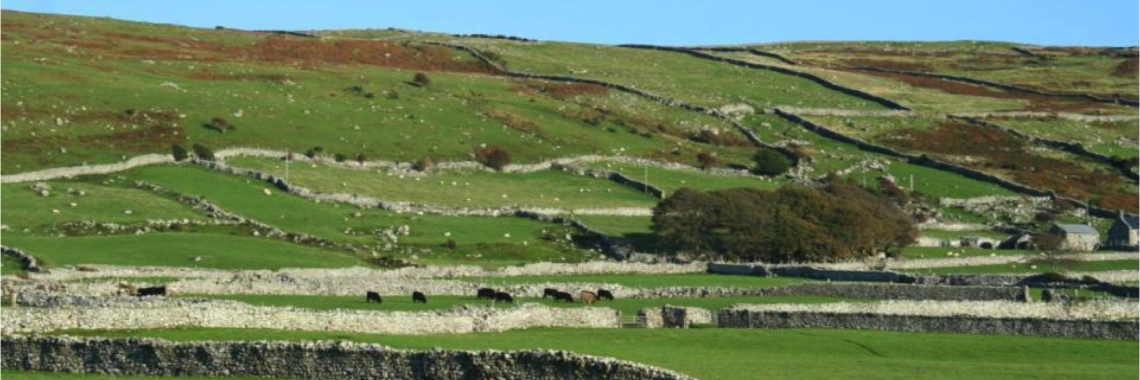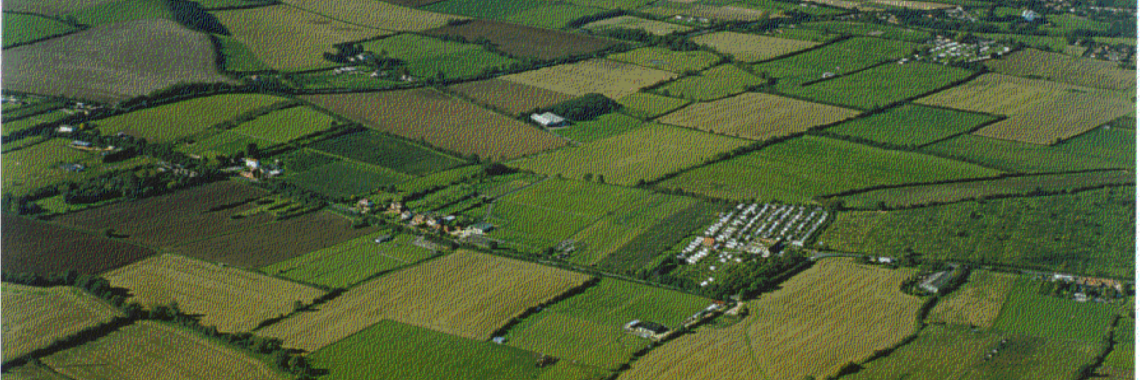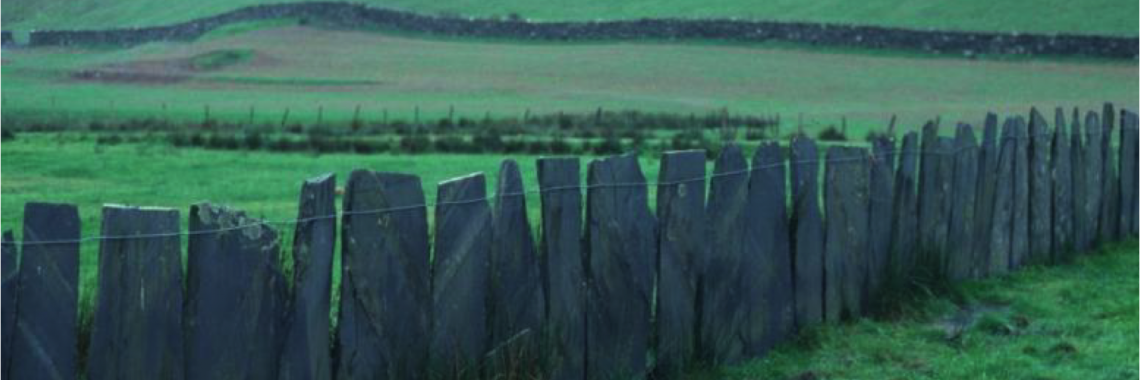Enclosed land in United Kingdom
27.09.2017, by Bénédicte Gaillard
The entries are still in process, the e-atlas is still under development
Almost every region of England and Wales has its distinctive field patterns and types of boundary walling. These reflect not only the nature of the underlying geology and soil type but also the region’s cultural history. They are important indicators of the historical development of the landscape and also help to conserve Countryside Character. As such, protection is now encouraged, and in some cases grant aided, by government and private institutions.
L. Cantor, 1982. The English Medieval Landscape (London: Croom Helm).
L. Cantor, 1983. The Medieval Parks of England. A Gazetteer (Loughborough: Department of Education, Loughborough University of Technology).
D. Hooke, 1975. ‘Llanaber, a study in landscape development’, Journal of the Merioneth Historical and Record Society, 7 (1975), pp. 221-230.
D. Hooke, 1988. ‘The Warwickshire Arden: the evolution and future of an historic landscape’, Landscape History 10, pp. 51-9.
D. Hooke, 1993. Warwickshire’s Historical Landscape – The Arden (Birmingham: School of Geography, the University of Birmingham).
D. Hooke, 2000. ‘Place-names and land use in coastal Ardudwy, with comparisons with the Conwy Valley in North Wales’, in European Landscapes: From Mountain to Sea, ed.
T, Unwin & T. Spek, Proceedings of the 19th Session of the Permanent European Conference for the Study of the Rural Landscape (PECSRL) (Tallinn: Huma).
D. Hooke, 2006. England’s Landscape: the West Midlands (London: English Heritage/HarperCollins).
D. Hooke, 2010. ‘The past in the present – remnant open field patterns in England’, Tájökológiai Lapok, Journal of Landscape Ecology, Special Issue, pp. 43-51.
O. Rackham, 1976. Trees and Woodland in the British Landscape (London: Dent).
O. Rackham, 1986. The History of the Countryside (London: Dent).
B.K. Roberts and S. Wrathmell, 2000. An Atlas of Rural Settlement in England (London: English Heritage).
B.K. Roberts and S. Wrathmell, 2002. Region and Place. A Study of English Rural Settlement (London: English Heritage).
A greater proportion of England and Wales consists of enclosed fields rather than open moorland, wetland or other unenclosed land. Moreover, field patterns and their boundaries reveal much about the historical development of the landscape: the evidence of historical maps is supplemented by the field evidence.
Fields and pastures, managed woods; bounded by either dry stone walls or hedges often set on earth banks with accompanying ditches; turf and stone banks In SW England
Still in use today but many hedges lost after 1950 with the introduction of heavy farm machinery and government grants favouring intensive agriculture – older hedges are now protected by law to safeguard wildlife habitats.
Marked boundaries may be necessary to define a space either for social or for practical purposes. They may show the limits of an enclosed area set aside for a special purpose, such as the enclave of an early minster, or demarcate any other religious site; they also indicate ownership (as in the case of medieval moated sites and hunting parks or later ornamental parks and gardens), thus also avoiding disputes over property; and act as barriers preventing damage by wandering animals, whether wild or domestic. They may demarcate fields and other areas set aside for various kinds of land use, usually either the cultivation of crops or as pasture for domestic stock.
Across lowland England divisions have been suggested between ‘ancient’ and ‘planned’ countryside. The latter extends in a broad band across England from Dorset in the south to Yorkshire in the north-east and largely coincides with the ‘Central Province’ demarcated by Roberts and Wrathmell in 2000 and 2002. Historically, this was a province dominated by settlement nucleation (and later settlement desertion) and open field agriculture. The Jurassic limestone escarpment ran through it. Several stages of ‘planning’ can be recognised: the introduction of open field agriculture in the later part of the early medieval period (C5 to C11), and the final enclosure of the open fields in the 18th and 19th centuries. To the west and east of this lies Rackham’s ‘Ancient Countryside’ in which ancient features such as field patterns, patches of woodland and commons have been relatively well preserved. The authors may not entirely agree about the boundaries of such regions but the general pattern is unmistakable. Beyond these zones lie the uplands of Wales, the South-West Peninsula and the Pennines.
Open field agriculture was being introduced in the early medieval period with large fields subdivided into furlongs of unenclosed strips and only the large open fields themselves might be hedged. Such a system was restricted to the more fertile regions of England, regions already intensively settled in Roman times and was associated with the increasing nucleation of settlement. The date of the full development of open fields remains controversial but they were to survive in many ‘champion’ regions until the enclosure movements of the 18th and 19th centuries, their management controlled by manor courts. Expansion of agricultural land had taken placed until the Black Death of the 14th century and the cultural instability and economic problems that ensued. Even in fertile regions many settlements were to be deserted and the open fields replaced by single farmsteads and large enclosed fields held in private ownership, usually used for raising the sheep or cattle that were more economically productive in the 15th and 16th centuries. Across much of the region later enclosure in the main 18th- and 19th-century period of enclosure, when all land generally passed into private ownership, resulted in large geometric field patterns with boundaries made up of singles species hawthorn (crataegus monogyna).











